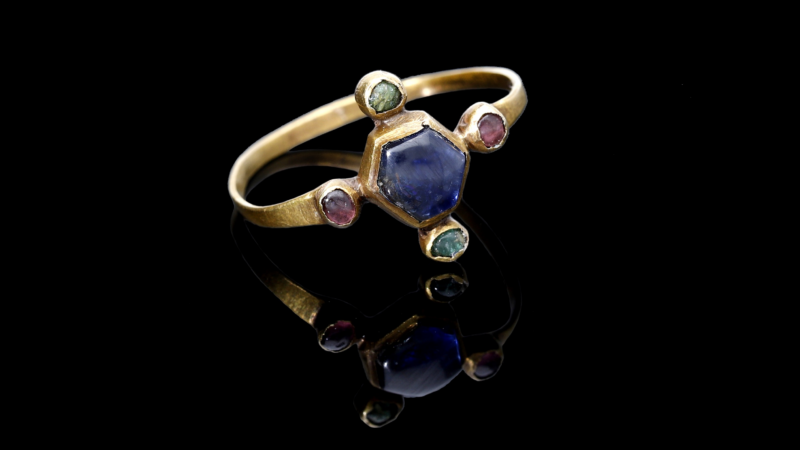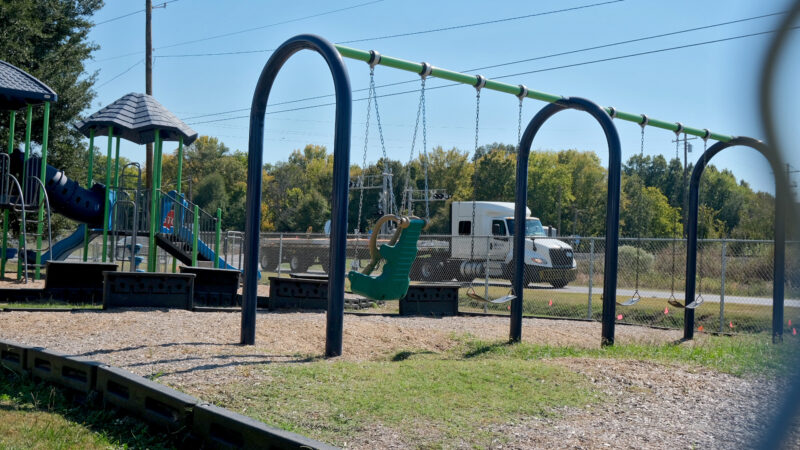A medieval Bishop’s ring from more than 800 years ago goes to auction
It sounds like a dream scenario for your average metal detectorist.
Picture yourself in a field, searching for hidden treasures, when suddenly you spot something shiny. Could it be gold?
For retired firefighter Mark Sell in Norfolk, England, the experience was even more remarkable. He discovered not just gold, but a Medieval Bishop’s ring dating back to the late 12th to early 13th century.
In November, 2019, Sell discovered the rare jewel in immaculate condition, with all its gemstones intact, in Shipdham, Norfolk. The ring was temporarily displayed at a museum dedicated to human history, culture and art. It is now scheduled to be auctioned at Noonans Mayfair, a London auction house, later this month.
Three things to know:
- Sell, 63, was out in a field using his metal detector with a friend when he got a faint signal and decided to dig. “I was amazed to see a thin line of gold in the clod of mud that I had dug up, and as I wiped away the mud, I could see the bezel of a medieval gold jeweled ring,” he told Noonan’s auction house.
- Laura Smith, a jewellery expert at Noonans auction house, explained that the style of jewel setting and its historical context suggest it likely belonged to a Bishop from the 12th or early 13th Century. The ring is set to be auctioned on March 26 and is estimated to fetch between $19,000 and and $23,000, according to the auction house. The profits will be split between Sell and the landowner of the field where the ring was discovered.
- After sharing his find with the landowner, Sell reported it to his local finds liaison officer, who is part of the U.K’s Portable Antiquities Scheme. This program, run by the British Museum, aims to record people’s everyday archeological discoveries into a historical database.
Listen to NPR’s State of the World podcast for a human perspective on global stories in just a few minutes, every weekday.
On display
While the ring was in the care of the British Museum, it was displayed temporarily for public viewing.
According to a Noonan representative, the Norwich Castle Museum has shown interest in acquiring the ring for permanent display. Originally a medieval royal fortification, the museum now serves as an art gallery and showcases significant objects from the region, including works of art, archaeological finds, and natural history specimens
The gold ring features a six-sided central hexagonal cabochon sapphire, complemented by two emeralds and two garnet stones, as described by Sell.
Dive deeper:
- Want more fuel to buy that metal detector? Here’s a story from last year on another fantastic historical find.
- Listen to NPR’s Short Wave podcast for more discoveries, everyday mysteries and the science behind the headlines.
Alabama Power seeks to delay rate hike for new gas plant amid outcry
The state’s largest utility has proposed delaying the rate increase from its purchase of a $622 million natural gas plant until 2028.
Former U.S. Sen. Doug Jones announces run for Alabama governor
Jones announced his campaign Monday afternoon, hours after filing campaign paperwork with the Secretary of State's Office. His gubernatorial bid could set up a rematch with U.S. Sen. Tommy Tuberville, the Republican who defeated Jones in 2020 and is now running for governor.
Scorching Saturdays: The rising heat threat inside football stadiums
Excessive heat and more frequent medical incidents in Southern college football stadiums could be a warning sign for universities across the country.
The Gulf States Newsroom is hiring an Audio Editor
The Gulf States Newsroom is hiring an Audio Editor to join our award-winning team covering important regional stories across Mississippi, Alabama and Louisiana.
Judge orders new Alabama Senate map after ruling found racial gerrymandering
U.S. District Judge Anna Manasco, appointed by President Donald Trump during his first term, issued the ruling Monday putting a new court-selected map in place for the 2026 and 2030 elections.
Construction on Meta’s largest data center brings 600% crash spike, chaos to rural Louisiana
An investigation from the Gulf States Newsroom found that trucks contracted to work at the Meta facility are causing delays and dangerous roads in Holly Ridge.









